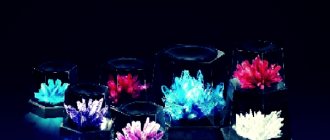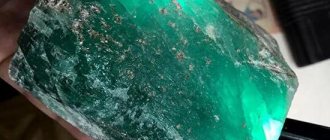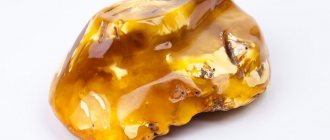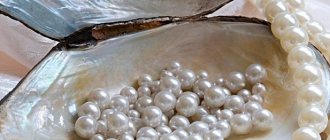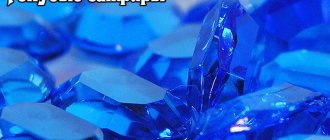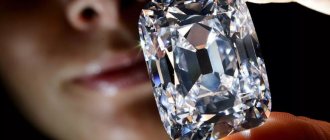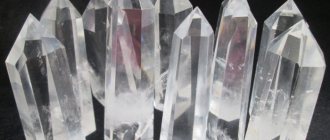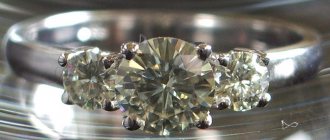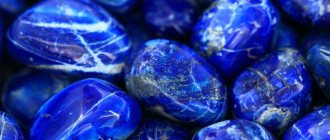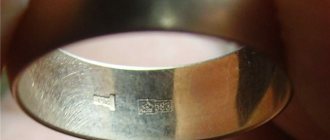Alexandrite is one of the stones with unusual properties, and due to its rarity and original appearance, it is one of the most expensive. The stone was named in honor of Emperor Alexander II, as it was found by a researcher on the day the sovereign came of age. It is a mineral with a small addition of chromium. It no longer exists in its pure form. The remaining stones with impurities do not look so noble. As a rule, they are cloudy or have no transparency at all. Due to the high cost of the stone, it is often counterfeited. There are specific tips and signs that will tell you how natural alexandrite differs from artificial one.
Facts from history
Alexandrite was discovered by Finnish researcher Nils Nordenskiöld. He first came across it in 1834 on April 17, and initially mistook it for an emerald, as it had a similar deep green color and low refractive characteristics. But the only difference immediately noticed was the increased hardness index.
Arriving home, the mineralogist decided to continue his research and, when he took out the stone, he was surprised, because it was no longer green, but had a pronounced red color.
But there is another version about how the stone was first found. Perhaps this happened in Yekaterinburg on the Tokovaya River, where it was also confused with emerald. But after a detailed analysis of the properties in St. Petersburg, where he was immediately sent, it became clear that this was a completely different jewel.
If it weren’t for Alexander’s birthday then, most likely, the stone would have been called “diaphanite” - that’s what Lev Perovsky, who was researching it at that time, wanted to call it.
Properties
In Russia, the imperial stone, due to a combination of circumstances - the death of Emperor Alexander II and the consequences of the First World War, acquired a bad reputation, meaning grief, loss of a loved one and loneliness.
Alexander II was very fond of the gem given to him and wore a ring with this stone, never parting with it. However, on March 1, 1881, the tsar, for some unknown reason, did not put on the ring with alexandrite and was killed on that day. This confluence of events looks somewhat strange if you also know the fact that March 1 in magic circles is considered one of the most difficult and unlucky days of the year - according to legend, on this day Judas hanged himself.
However, in other parts of the world, chrysotile beryl is treated more loyally and sees only good things in it. Due to its unique ability to change color, alexandrite is credited with various magical properties - this is understandable, because ordinary people are accustomed to classifying everything that cannot be explained as a miracle.
In Russia, it is believed that alexandrite is capable of enhancing the gift of intuition and prophecy, so mediums use the stone to make various talismans and amulets that help not only predict future events, but also protect their owner from the evil eye and damage. In addition, it was believed that the chameleon stone could cure alcohol addiction. To do this, alexandrite had to be left in a container with water all night, and upon waking up in the morning, before breakfast, drink this water.
In India, the miracle stone is considered a symbol of health, longevity and financial prosperity. The first mention of it is contained in an ancient treatise called “Mahabharata”, where alexandrite is compared to a peacock feather and called “peacock’s eye”. Not every person can afford an amulet with such a rare stone, but the owner of such an amazing treasure was considered lucky in all endeavors and vital matters.
In European countries, alexandrite is considered a stone that attracts good luck and helps to establish new relationships, not only of a romantic, but also of a business nature.
Peculiarities
To understand how to distinguish natural alexandrites from counterfeit copies, you need to have specific knowledge about the nature of the stone and its distinctive features.
Its birefringence characteristics are 0.008-0.010. The color of genuine jewelry is exclusively bright red, yellow or green. The stone sometimes shows changes under ultraviolet light, and will appear red under fluorescent light. Daylight will help the stone develop a blue-green hue, sometimes just green or green-yellow. When it comes to artificial light, alexandrite can appear red, red-orange, and also red-purple.
Important! If you bring a magnet to a stone, it may be attracted, but very rarely, or not react at all.
How to recognize natural alexandrite?
The first thing you need to do in order to protect yourself from counterfeiting is to feel free to ask the seller to present the appropriate certificates. But this is not enough - it is worth additionally checking the document for accuracy and contacting the authority that issued it. If there are no problems, it is real alexandrite.
If the papers are not available, it is not easy to visually determine whether the stone is artificial or not. Other stones are often used for fakes, the most famous of which are cubic zirconia, as well as synthetic garnet and sapphire - they have the same ability to change color. In this case, it is almost impossible to determine the authenticity of alexandrite independently and without conducting appropriate tests.
What to consider when buying a gem
Alexandrites are small, up to 2-3 carats. Unique items larger than five carats are listed in catalogues. All specimens are supplied with a certificate (gemmological examination certificate) confirming their naturalness. If there is no document, there is no need to distinguish the original from the fake, everything is clear. However, the document itself requires verification: authenticity is established by contacting the organization that issued it. Information about issued certificates is posted on the official websites of companies.
True alexandrite
Real alexandrite can be found in pre-revolutionary domestic jewelry. Soviet jewelry contains artificial inserts.
High quality crystals weighing two to three carats cost $22-39 thousand per carat. Grayish specimens with weak pleochroism fetch $320-550 per carat.
The most expensive alexandrite was sold by Christie's auction house for $206 thousand almost thirty years ago.
What types of fakes can there be?
What is artificial alexandrite made from? This is one of the most asked questions when it comes to authenticity. For imitation, materials that closely resemble stone are usually used. One of them is synthetics.
If you put two stones next to each other - synthetic and original, it is impossible to distinguish them by eye. Experts note that the fake jewelry in this case even surpasses natural alexandrite in external characteristics.
Many people, when buying jewelry for themselves, may prefer synthetics, but if the stones are needed for an exhibition or personal collection, there is no question of fakes.
Now in more detail about other materials for artificial alexandrite:
- synthetic corundum. This is one of the best options for simulating stone, which was used back in the times of the former USSR. The material is best able to convey the color characteristics of a real stone, having in its arsenal each of the colors of alexandrite. As for hardness, the fake will also be +0.5 stronger. It is distinguished from the original with the help of light, in which the synthetics have a yellow tint, and the original shimmers with all colors, with a slight predominance of yellowness. In recent years, corundum is no longer used so often in large-scale production, as it has been replaced by spinel;
- synthetic spinel. In the modern world, it is the most used material for fake alexandrites. But we cannot say that spinel is no different from the original. There are no yellow tones in it, so it will not be a problem for an experienced specialist to determine what kind of material it is, even at home. Another quite noticeable difference is that the original will show a green and, less often, red tint in daylight, while the spinel will turn purple. There is also a slight difference in the hardness coefficient, but this can only be determined through laboratory tests. People consciously buy this imitation stone only because it is much cheaper than real alexandrite and will cost about the same money as aquamarine or amethyst;
- glass. This method has been used for many years to obtain Swarovski crystals. Chrome is added to the glass - this is one of the main secrets of their shine. But glass fakes are not very durable, especially compared to synthetic corundum and spinel. While the original coefficient is 8.5, the fake will have a coefficient of 5.5 units, in some cases the coefficient reaches 6.0 points. Before determining whether the stone is artificial or not, it is taken out into the light and observed for the overflow. Another negative feature of glass is its instability to mechanical damage - imitation jewelry can be easily damaged by a sharp object.
A very popular way to fake alexandrite is to use stones with similar properties. For this purpose, the effect of pleochroism is used. To obtain copies, they take pyropes and garnets that contain chromium. All of them, like alexandrite, were found in the Urals. The resulting products have almost the same color parameters, but they do not exhibit a blue tint.
Artificial origin is not always a minus
Science and technology have brought the process of growing crystals to perfection: the physical, chemical and aesthetic characteristics of the imitation and the original are identical. It is impossible to reliably distinguish artificial alexandrite from natural one: this requires special equipment.
Synthetically created gems do not have a “widow’s stone” trail; such alexandrite products are suitable for all zodiac signs.
| Zodiac sign | Compatibility (“+++” – fits perfectly, “+” – can be worn, “-” – strictly contraindicated) |
| Aries | + |
| Taurus | — |
| Twins | +++ |
| Cancer | — |
| a lion | +++ |
| Virgo | — |
| Scales | + |
| Scorpion | + |
| Sagittarius | + |
| Capricorn | + |
| Aquarius | + |
| Fish | + |
Artificial material is stronger, easier to maintain, and cheaper than natural material. Quite organic for the digital era.
What other stones are used to fake alexandrite?
- Andalusite. This material was not produced artificially - it, like alexandrite, is a natural material. It is also very beautiful, and has unusual shimmers in the sun. It has significantly more shades than alexandrite. They are clearly visible from different viewing angles and under different lighting sources. But the stone, although it is a rare specimen, is not very expensive. It is very widely used to decorate silver products, making them original, sophisticated, and at the same time accessible to everyone.
- Tourmaline. This stone has subspecies that are not much different from alexandrite. But their ability to show different colors will depend on the viewing angle. The “watermelon” type of tourmaline is often found. It will have both green and red colors. Experts have not yet fully determined the cost of the stone - it continues to fluctuate, because it is not yet entirely clear how often it will be found in nature.
- Ruby. One of the stones that is very similar to alexandrite. It is very difficult to discern the difference between them, especially if you see two stones side by side for the first time. They are also very similar in hardness. Ruby is as rare as alexandrite, but jewelry with it will still cost less. An interesting fact is that rubies with pleochroism have even more shades.
- Spodumene and zircon. These stones are not those that closely resemble alexandrite, so distinguishing them from the original will not be difficult even for an uninformed buyer.
Table of characteristics of alexandrite and materials suitable for its imitation:
| Material | Specific gravity | Refractive index | Birefringence value |
| Alexandrite | 3,71-3,75 | 1,74-1,75 | 0,008-0,010 |
| cubic zirconia | 5,60-6.0 | 2,15-2,25 | — |
| Andalusite | 3,13-3,31 | 1,63-1,64 | 0,009-0,010 |
| Spinel | 3,57-3,70 | 1,70-1,73 | — |
| Pomegranate | 3,78-3,85 | 1,76 | — |
Alexandrite remains a very popular stone, and everyone is trying to make it as similar as possible. And this is not without reason: since the stone is very expensive, you can make good money on this. You should always remember that a real mineral has a triple spectrum of colors. But, in addition to green, red and yellow, blue or lilac shades may appear under certain circumstances.
Studying synthetic and original materials under a microscope
Scientists were engaged in the identification of alexandrite. They created descriptions of the internal structure of the stone and accompanied each stage of the study with photographs. The Atlas of Inclusions is interesting for its comments and facts. What does synthetic material look like under a microscope:
- Contains flux and gas bubbles.
- Primary inclusions of flux resemble fingerprints.
- Contains platinum inclusions.
- The samples differ in their platinum content.
- Precious rocks exhibit internal skeletal forms.
- They give layering and allow you to see broken lines crossed with each other.
- When turning, the layering gives off unusual glows.
- Similar in pattern to tree bark.
- In synthetics, when turned at a right angle, double glare occurs.
- Creates a “cat's eye” effect.
- When viewed obliquely, the color grows in waves.
The most unusual inclusions are obtained in synthetic samples due to iridium. There is a flower fencing of the stone along the entire perimeter of the surface.
Experts warn that almost all alexandrite presented in trade offers is a fake, a high-quality imitation. The gem is one of the most expensive, so you should take only those items that have all the necessary accompanying documents. If you want to find a high-quality imitation, then you can use the help of professionals to select an excellent item similar to the original.
Proper care of alexandrite
Like every piece of jewelry, alexandrite loves care and attention. There are several rules that should be followed to ensure that the stone retains its original appearance.
3 simple rules will protect your stone from scratches and loss of color:
- You should be careful and avoid contact of the mineral with chemicals. Therefore, if you plan to clean the house, do laundry or apply cosmetics, it is better to remove the jewelry and not expose it to such a risk;
- How to clean alexandrite correctly? This process has its nuances, but is not complicated or inaccessible. First you need to prepare warm water, but not boiling water, and splash in a little dishwashing liquid. The jewelry is placed in soapy liquid for no more than 20 minutes. Then you need to take out the stone, wipe it with a soft cloth and rinse it under regular tap water. To dry alexandrite, you can take any non-hard cloth;
- This mineral loves a dark and cool environment, so it is advisable to use the most suitable place in the house for its storage. Also, since it does not tolerate interaction with other minerals, it is better not to store it together with other valuables in a box, but to wrap it in soft cloth or allocate a separate box for jewelry.
Application
The massiveness and density of granite, its wide textural capabilities (the ability to accept mirror polishing, in which the iridescent play of mica inclusions appears in the light; the sculptural expressiveness of unpolished rough stone that absorbs light) make granite one of the main materials for monumental sculpture. Granite is also used for the manufacture of obelisks, columns and as cladding for various surfaces.
The most ancient material, a constant companion of man, elegant and solid, expressive and varied, massive and eternal - these are the qualities that granite possesses - the best material for creating a human habitat. Your interior can become cold or cozy-warm, defiantly luxurious or modest, light or dark. Nature has created it so unique and diverse that each product, fragment, and coated surface is unique. The main advantage of granite is its natural hardness. An excellent material for exterior finishing of facades, steps and floors. A wide range of colors opens up unlimited possibilities for designers. Most breeds have low abrasion and water absorption. Under modern processing conditions, granite is cut and polished using diamond. In addition, you can achieve a mirror polish. This is a stone used in construction, which is the most resistant to bad weather and has a very high compression resistance (from 800 to 2,200 kg/sq.cm).
Used for cladding columns, balconies, staircases, monuments, furniture, etc. Granitic rocks - in common speech, in a technical and commercial sense, this name defines igneous rocks - both intrusive and effusive, with hardness and workability comparable to granite . Their resistance to crushing and pressure is also very high in most cases. Gneisses, formed by rocks of volcanic origin that have the same or slightly different mineralogical composition than granites, are defined as granitic rocks. That is, granitic rocks used as building materials include, in addition to scientifically defined granites, syenite, diorite, gabbro, porphyry, liparite, trachyte, andesite, basalt, diabase, feldspathoid, gneiss, sericio, slate quartzite, serpentine and others varieties and subspecies of the above mentioned structures. Many of the listed breeds, from Trachytes onwards, have trade names defined by their use or manufacturer. No one would sell trachyte, gneiss, sericio, slate quartzite, or serpentine as granite, also because of their characteristic appearance, which is often impossible to confuse with anything else.
The rock here determines only the characteristics of hardness and workability, which are very different from those of marble. Ambiguity and ambiguity between commercial, technical and scientific names can arise, on the contrary, between granites, syenites, diorites, porphyries due to their appearance, which can be very similar to a layman and quite easily leads to deception, both due to the old names, and due to the multitude of stratifications in different types of rocks of the same family, or due to other reasons.
How to wear alexandrite?
Since the stone is not simple, and many believe in its magical properties, there are several recommendations on how to properly wear jewelry with alexandrite:
- Perhaps someone has noticed that they are trying to buy jewelry with this mineral in sets. This happens for a reason - people believe that if you wear one piece of jewelry with a stone, it promises loneliness and unhappiness.
- The healing qualities of the stone can be enhanced by a gold frame. There are also rumors among people that this way the magical power of the jewelry increases.
- For a couple, any stones can be used as another mineral; the only undesirable option is ruby.
Interesting! Since ancient times, when people were preparing to leave the house, alexandrite was the last piece of jewelry they would put on themselves, and the first to take off.
Magical properties of the mineral
What properties does a crystal have? Alexandrite is a stone that is endowed with pronounced magical properties, which means it will become a reliable companion for everyone who has lost their way or wants to find happiness and good luck with the help of the mineral. It repeatedly enhances the character traits of its owner, so it is not recommended as a talisman for people with a choleric temperament.
Perfect for strong, self-confident people. Helps achieve your goal, relieves groundless jealousy, anxiety and stress. Attracts fortune - people wearing chrysoberyl are more likely to win lotteries and gambling.
Among the main magical properties of the mineral it is worth noting:
- granting inner harmony;
- attracting wealth and prosperity;
- increase in life potential;
- development of creative abilities;
- getting rid of shyness and isolation;
- increased performance.
In Russia, alexandrite, despite its beauty and uniqueness, undeservedly received the second name “widow’s stone”. In the 20th century, it was believed that this mineral was capable of attracting trouble to the family and predicting misfortunes.
The war years were to blame for everything - at the beginning and middle of the last century, during the First and Second World Wars, millions of men died at the front. Their wives and mothers, whose boxes mostly contained artificial chrysoberyls, believed that the death-attracting stone was to blame for everything. For this reason, astrologers recommend wearing alexandrite only in combination with other stones.
Prophetic functions were attributed to alexandrite in the same century. It was believed that if a mineral changes its hue to golden yellow, it means bad luck is about to happen. On the contrary, a mineral glowing pink or red promised its owner a long and happy life.
